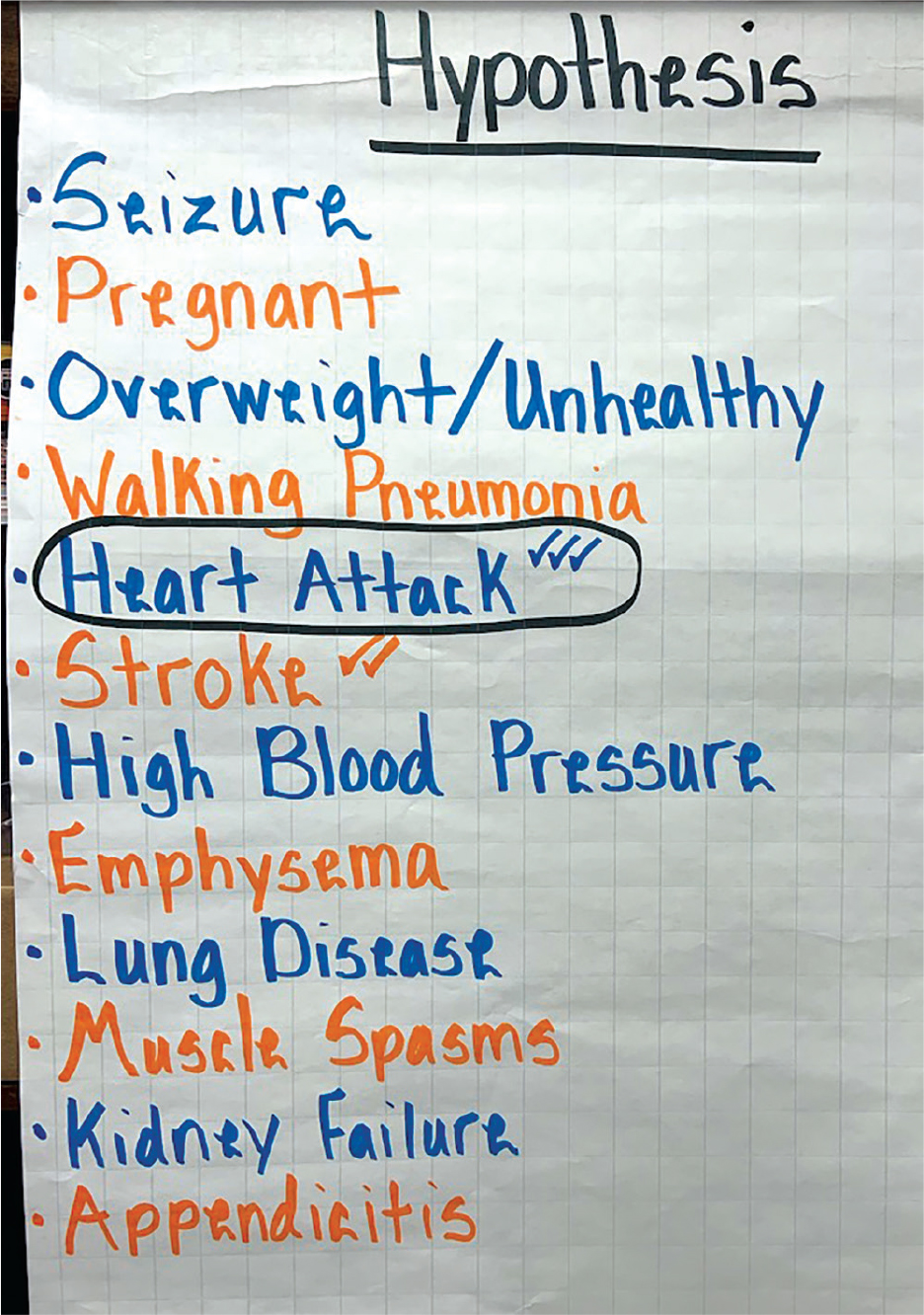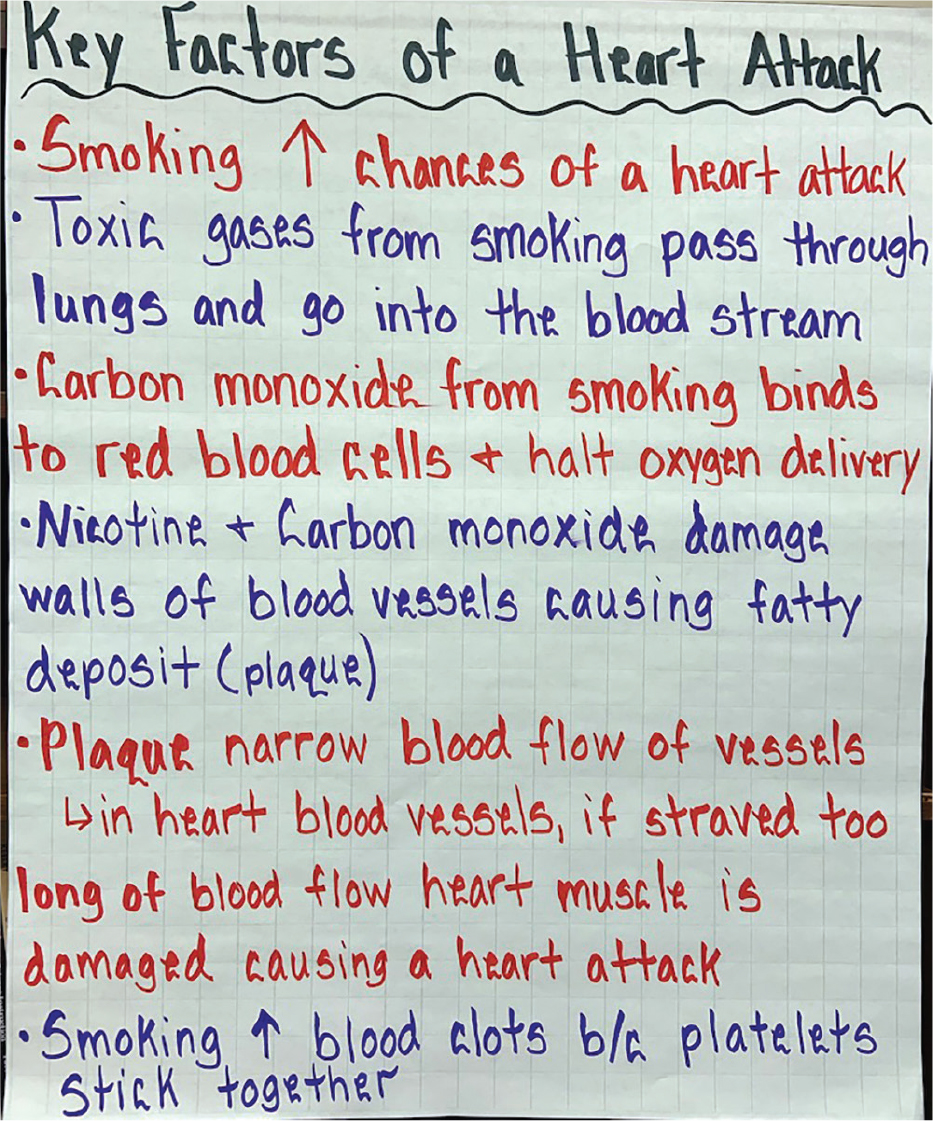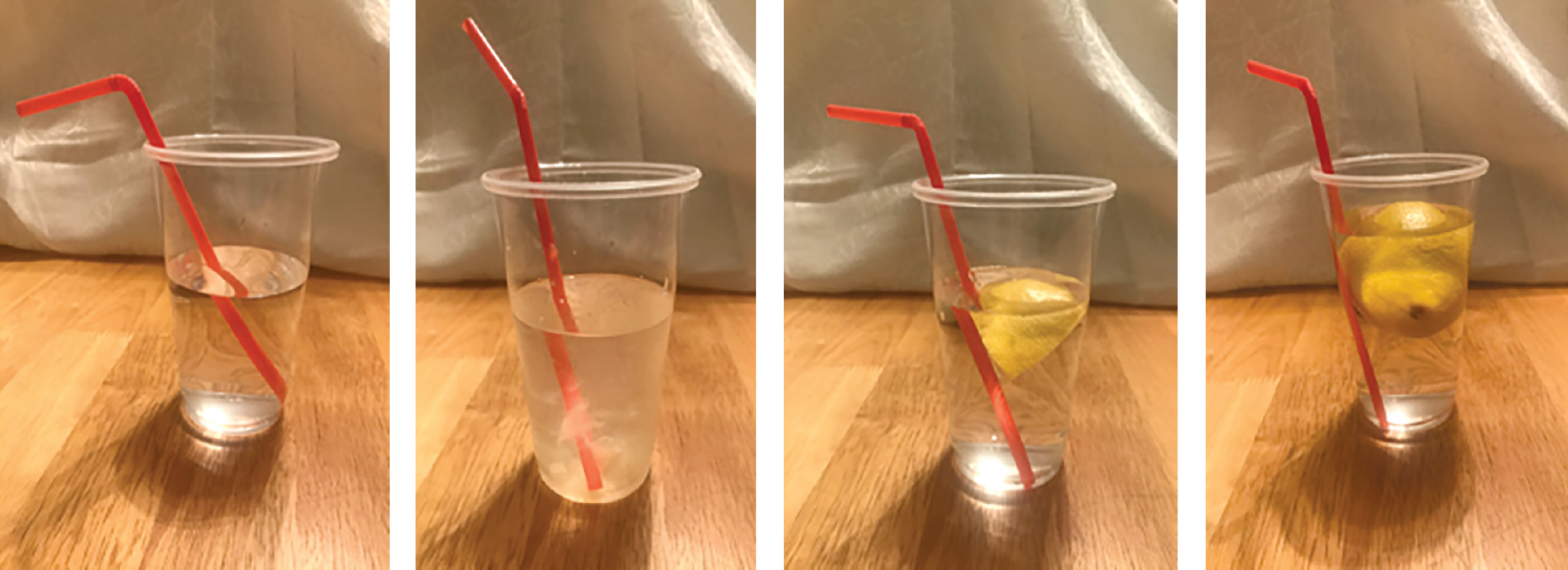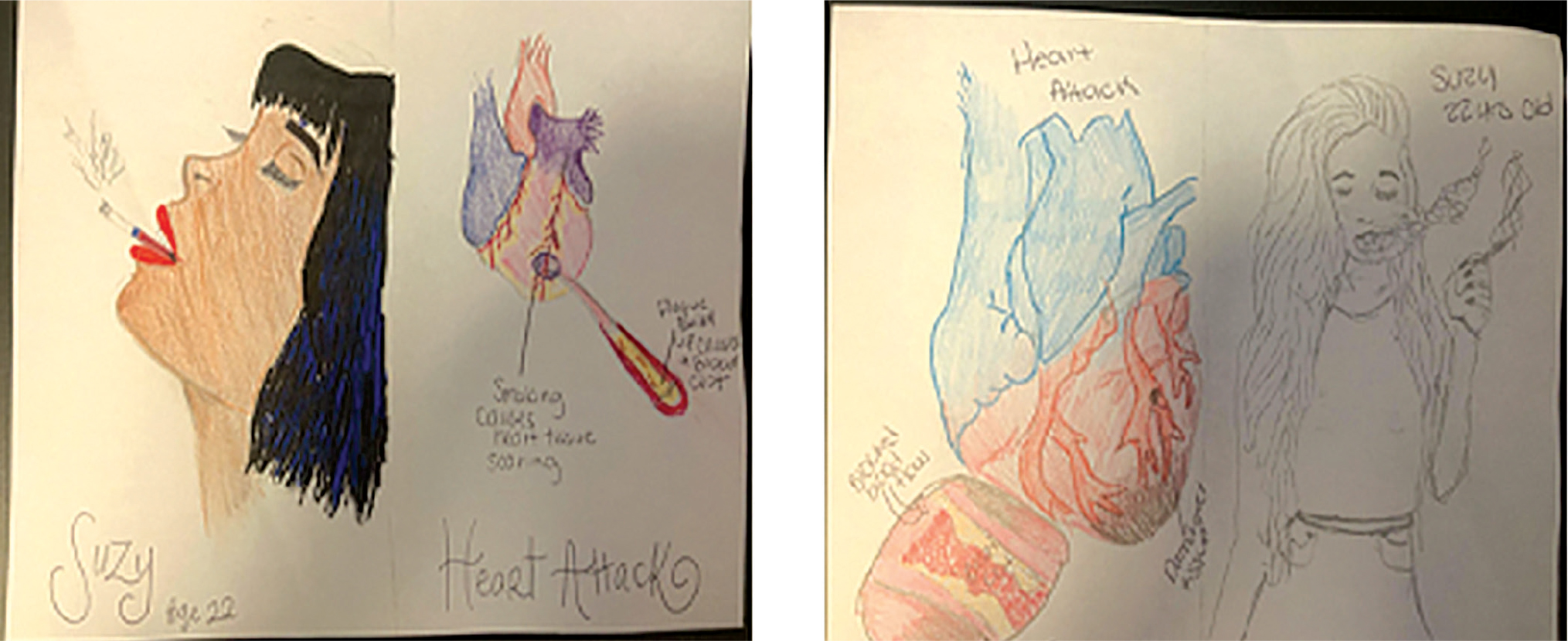feature
Do Not Disturb the Flow!
Smoking and the cardiovascular system
The Science Teacher—November/December 2020 (Volume 88, Issue 2)
By Shunderla Wilson and Brooke A. Whitworth

Every 40 seconds, someone in the United States has a heart attack (Heart Disease and Stroke Statistics 2017). Students may experience or be affected by several incidences of heart attacks throughout their life. As such, students should be aware of the risk factors and learn the underlying reasons for a heart attack.
Most students believe they are too young for a heart attack and think symptoms will appear gradually (Roth and Gotter 2018). Heart disease in younger individuals is appearing more frequently due to obesity, tobacco and alcohol usage, stress, and race (Napoli 2019). In this article, we describe how blood flow is important to the cardiovascular system by considering the harmful effects of smoking on the body using the Hewson and Hewson Learning Cycle Instructional Strategy (Keeley and Konicek-Moran 2015).
Context
This series of lessons focuses on the standards for a human anatomy and physiology course (see Online Connections), with a focus on the cardiovascular section with Next Generation Science Standards High School Life Science (HS-LS1-2). Students identify the role blood vessels play in the transport and exchange of materials; specifically, blood clots and how clots halt blood flow through the circulatory system. Students also examine a heart attack in-depth, which helps to eliminate commonly held misconceptions about the age barrier and symptoms. We taught the lesson in a 10th grade human anatomy and physiology course over three days (50-minute class periods.)
Hewson & Hewson learning cycle instructional strategy
The Hewson and Hewson learning cycle instructional strategy has four stages: diagnose, opportunity to clarify and contrast, practice new idea, and apply new idea (Keeley and Konicek-Moran 2015). The diagnostic stage should contain a case study or a scenario to elicit student thinking about the content. The opportunity to clarify and contrast allows students to take their initial thinking and compare to the content knowledge. When students practice the new idea, they engage in an activity which furthers their content understanding. The last stage is applying the new idea; students relate the content knowledge to a different aspect of the concept to display conceptual understanding.
The learning cycle allows for students to observe a phenomenon from several different perspectives and grasp the information while solving a real-life problem. Students must use the function of elements in the body system to consider how poor lifestyle choices interrupt the flow of blood in the cardiovascular system. With the Hewson and Hewson learning cycle, students are required to engage in deeper-level thinking to go beyond the memorization of facts and apply that information to daily living.
Diagnose
On day one, the teacher introduces the concept with a case study (Figure 1). Students are given the chance to diagnose the patient and consider the underlying reasons for the condition by writing an explanation. The teacher should explain to students there is not a right or wrong answer to the case study, but should get their minds thinking. The teacher may want to include a minimum length for the explanation, like 3-4 sentences, and require students to reference the lifestyle and symptoms of the patient.
Case study for introduction.
Suzy is a twenty-two year old who is about to graduate from college in May. She was in class when she texted her friend complaining of shortness of breath and back pains. Walking out of class, she passed out. When she arrived at the hospital, the doctors explained she is at high risk for a __________. Suzy’s parents are confused saying this only occurs in older individuals. Suzy explains to her parents that she has been smoking since her freshman year of high school. Did the information Suzy volunteered explain why she was a high risk patient?
Opportunity to clarify & contrast
After letting students write down their initial thoughts, the teacher then composes a list of hypotheses (Figure 2) where students share their thinking and decide which hypothesis is most accurate for Suzy. When creating the hypothesis list, check marks may be used to show redundancy from student’s ideas. After hearing possible ideas, the teacher reveals the diagnosis for Suzy through a video explaining what is happening internally during a heart attack (Smoking Dramatically Increases the Risk of Cardiovascular Disease 2013).

List of hypotheses.
Following the video, students should add, correct, and/or delete ideas from the hypothesis list based on what they now understand. Additionally, a classroom discussion should be held regarding students’ hypotheses. The teachers should focus on why a heart attack is the most accurate diagnosis for Suzy, being sure to explicitly state Suzy’s age and onset of symptoms in the discussion to eliminate the misconception of the age barrier and symptoms of a heart attack. Teachers should also address Suzy’s lifestyles choices (e.g., smoking) in the discussion. Students should be aware of how poor lifestyle choices can damage their body since they are in the same age ranges.
As a class, students should compose a list of the key factors contributing to a heart attack (Figure 3) using ideas from the video and classroom discussion. Teachers should allow the students to formulate the key factors themselves and only offer assistance when needed. The key factors list is a good stopping point for day one, since making sure important ideas are represented in the list may require extra discussion and replaying for the video as well.

Student list of key contributors to heart attacks.
Practice new idea
On day two, the focus is on how the harmful chemicals in cigarette smoke result in clogged arteries and disturbed nutrient flow. The students should know the cigarette smoke causes the blood vessels to constrict, plague to build-up around the vessels, and platelets begin to stick together; all of these issues contribute to the creation of blood clots. All of the above issues are important in understanding how a heart attack occurs because all are contributing factors to an eventual heart attack. However, the blood clot is the primary cause that stops nutrient and blood flow to the heart resulting in a heart attack.
For the practice new idea strategy, students need to relate a concept to something in their daily lives. To start day two of the lesson, we ask students to make analogies about the clogging of arteries. Teachers should instruct students to think of ways things may be clogged and stop the flow of things in their daily lives during a think-pair-share.
After approximately five minutes, students should share their thinking and ideas with the class. The teacher may mention several everyday examples of how things can be clogged or stopped in everyday life. For example, football tackles stopping the players from reaching the end zone, water stoppers when washing dishes, and/or knots in headphones or a water hose.
Teachers should be sure to have a short discussion connecting these analogies to blood clots as noted from the video. Using the analogy of knots in a water hose, the teacher can relate the hose to an artery, water as blood, open hose end to the heart, and a knot as a blood clot. As the walls of the water hose are closed in the knot, no water can reach the open end of the water hose; the same occurs in the heart as plaque constricts the walls of the arteries, creating a blood clot, restricting blood and nutrient flow to the heart, eventually causing a heart attack.
The main portion of day two is an activity in which students visit stations with different types of lemon water, which represent different stages of blood clotting using water, lemons, straws, and cups (Figure 4). Students are assigned a number from 1 to 6 and instructed to form a group with others who had the same number. This allows students to be placed with individuals of different levels and to be separated from friends if needed. Each station should have one type of lemon water present along with a straw for each student. One station should have plain water and the others should be set up as followed: water with lemon bits, water with a slice of lemon, and water with a whole lemon.

Demonstration of station set-up.
When instructed, groups should rotate to each station, making hypotheses about what will happen when trying to drink the water with the straw placed directly on the obstacle (lemon). Each member in the group should attempt to drink the water and then form their own conclusions. A time limit of 3-4 minutes for each station should be used. Having a cue or timer will allow for an easier change of stations.
After rotations, the groups are given time to relate each scenario to blood flow with reference to blood clots and considering what happens on a nutrient level with the interference present. After group discussion, there can be a whole group discussion to ensure each group makes the same inferences from the stations. Class discussion of nutrient flow relating to each scenario is a good stopping point for day two.
There are not many safety issues with this activity, but teachers must always be observant during labs and may want to review lab rules. Since students are dealing with water, all stations should be placed away from electrical outlets and be equipped with paper towels in case of spills. Teachers should also be mindful of any allergies since students are working with food. We would also suggest students wear goggles since they are working with straws and could potentially poke their eyes.
Apply new idea
Students now need to apply the concepts by returning to the case study and relating the key factors to Suzy. For day three, students create a model evaluating Suzy’s case study and explaining why she had a heart attack at such an early age. Students create an illustration of Suzy’s blood flow, incorporating concepts from the key factors list, as well as Suzy’s age, diagnosis, and lifestyle choices. Students have the option to present all information through illustration only or by also incorporating an explanation. Teachers should tell students they are not being graded on the quality of the drawing, but on the information present. Two student mental models are shown in Figure 5.

Student’s mental model examples.
For grading purposes, teachers use the rubric (see Online Connections), which is out of a 9 possible points, but teachers may revise as needed. It has three major criteria focusing on the patient, the phenomenon, and the science content. Each criterion has four indicators for student achievement which is defined by how much information was present in the student’s submission. The teacher may even want to underline factor(s) in the developing and beginning stages, so students are aware of their score.
Issues for consideration
This activity was designed for a tenth-grade human anatomy and physiology classroom and can be easily modified for students of different achievement levels. If teachers wish to challenge their students, consider incorporating the lungs to get a bigger picture of how chemicals are transported into the heart when drawing the mental models.
For a shorter timeframe or lower grade level, teachers may consider doing the lemon water demonstration themselves instead of allowing groups to rotate through the stations. The activity requires limited classroom management if your students are trained in participating in lab or station activities. However, the teacher may want to reiterate discourse rules when students begin discussion to remind students how best to interact with one another.
Students tend to find the activity challenging but satisfying, because it relates to their health and to a natural phenomenon. Students are often shocked about the diagnosis and amazed to understand how the body system operates. If students are not used to drawing models, then students may struggle with this aspect of the activity and it may require some scaffolding. However, creating a safe space will allow students to feel more relaxed and confident. It may also help to remind students that the goal of the model is not artistic ability or the “beauty” of their drawings, but that the model accurately conveys their thinking.
Conclusion
By utilizing the Hewson and Hewson Learning Cycle Instructional Strategy (Keeley and Konicek-Moran 2015), teachers can help students explain the phenomenon of a heart attack. This strategy allows teachers to identify students’ misconceptions about heart attacks as well as clarify other known misconceptions. Students are able to relate a real-life phenomenon to classroom lessons and have the opportunity for clarification through videos and analogies. The lemon water activity allows students to view how blood clots halt blood flow and nutrient transportation through blood vessels. For an overview of the concept, teachers make students’ thinking visible from a formative assessment involving a mental model. Throughout the series of lessons, students are engaged in discussion involving explanations to achieve conceptual understanding.
Online Connections
Smoking Dramatically Increases the Risk of Cardiovascular Disease (video)
Connecting to the Next Generation Science Standards
Shunderla Wilson (shunderla.wilson@gmail.com) is a Biology I Instructor at Southwind High School in Memphis, TN. Dr. Brooke A. Whitworth (bwhitwo@clemson.edu) is an associate professor of science education at Clemson University in Clemson, SC.
Biology Inquiry Life Science NGSS Phenomena Teaching Strategies High School Grades 9-12


